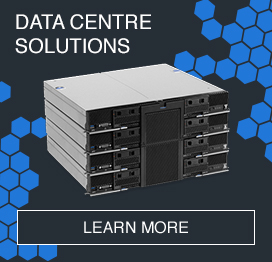In today’s 24x7x365 business world, IT infrastructure outages can cost businesses big time in dollars, customer satisfaction and reputation, making real-time visibility and monitoring vital.
According to the 2016 Cost of Data Center Outages study conducted by the Ponemon Institute, the average price of an unplanned data centre outage in the US today is US$740,357. This figure includes a multitude of costs such as damaged data, lost productivity, time in bringing the systems back online, lost revenue and reputational damage – just to name a few.
While the Ponemon report cast a wide net across industries, and US companies are usually larger than Australian enterprises, the report still illustrates the importance of keeping tabs on the health of IT infrastructure through real-time visibility and monitoring tools. While some outages cannot be anticipated – someone putting a backhoe through a fibre-optic cable, for example – actively monitoring an organisation’s IT infrastructure allows it to easily spot potential problems and act on them before they become major issues.
Real-time filtered data the key
Traditionally IT staff monitor their infrastructure via a range of tools such as visual dashboards, and some send SMS and email alerts that can also be configured into most modern monitoring tools. However, it’s important to filter the data carefully so that IT staff aren’t flooded with alarms. Too many messages or emails, especially if they’re of no consequence, can lead to complacency.
Ideally, monitoring tools should report as close to real-time as possible without affecting the monitored service or hardware. There are two main categories of monitoring: agent-based monitoring and agentless monitoring. Agent-based monitoring uses an agent running within the application to capture performance data, while agentless monitoring can work in local or appliance mode.
Resource overhead versus analysis
Local mode agentless monitoring runs on a physical or virtual machine, gathers data and exports it via middleware using log files or APIs, for example. Appliance mode agentless monitoring runs at a separate location to the target environment and gathers the data through the network similar to local mode.
While agent-based monitoring provides the most granular level of detail, all agents have some overhead in resources such as memory and CPU time. Agentless tools have little or no overhead but because such tools extract from the OS or the network, they need more data analysis and evaluation to extract relevant insights.
One version of the truth
Many organisations will have dozens of different tools, usually with a mix of all three types. This creates difficulties when issues arise. IT team members need to spend hours trawling through sometimes conflicting error reports trying to work out what the problem is and how to resolve it. As a result, organisations need to abandon point solutions and implement the tools and architecture needed to provide a unified dashboard view to monitor critical IT service.
Whether an organisation is running physical servers, virtualised, big data, cloud or a combination of all, timely monitoring can help prevent major outages.
Centralise and simplify resource management
For Lenovo x86 servers, Lenovo XClarity is a new centralised resource management solution that enables administrators to use the dashboard to deploy infrastructure faster and with less effort. The solution seamlessly integrates into System x M5 and X6 rack servers using Agentless Monitoring. These servers are powered by Intel® Xeon® processor after "into System x M5 and X6 rack servers, powered by Intel® Xeon® processor, as well as the Flex System converged infrastructure platform. XClarity provides automated discovery, monitoring, firmware updates and compliance, pattern-based configuration management, and deployment of operating systems and hypervisors to multiple systems. Speak with a Lenovo Business specialist today to learn more.

















